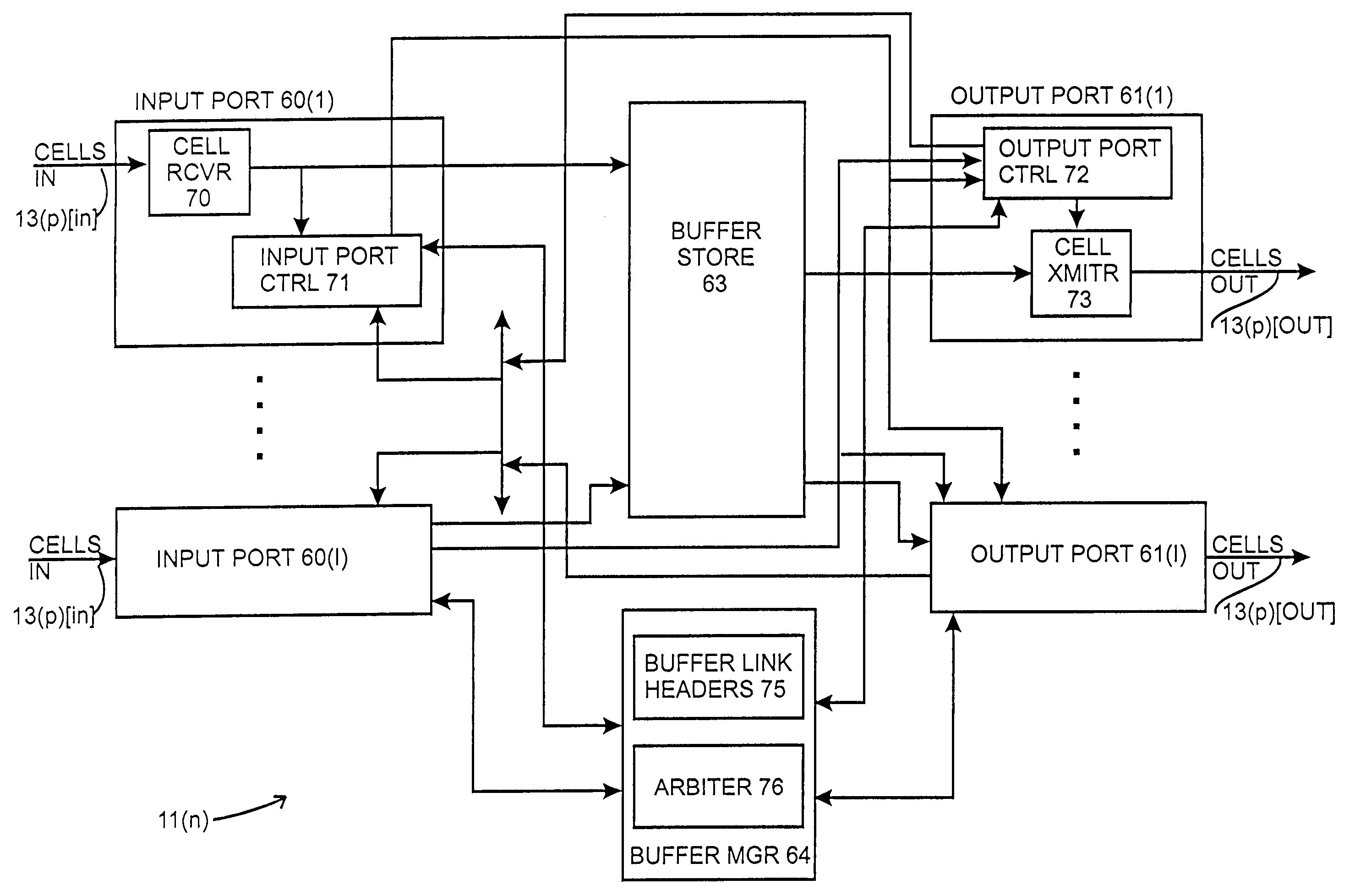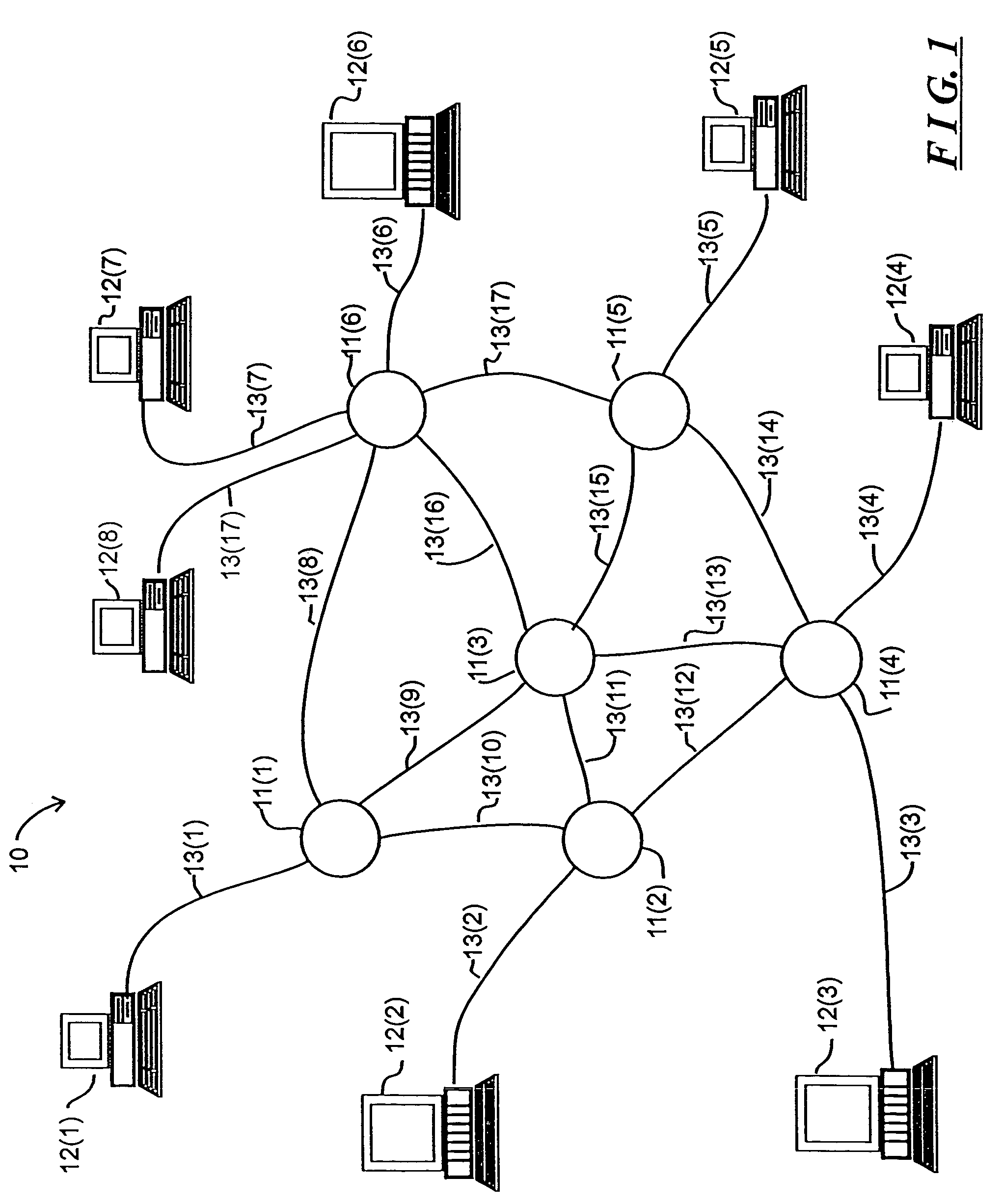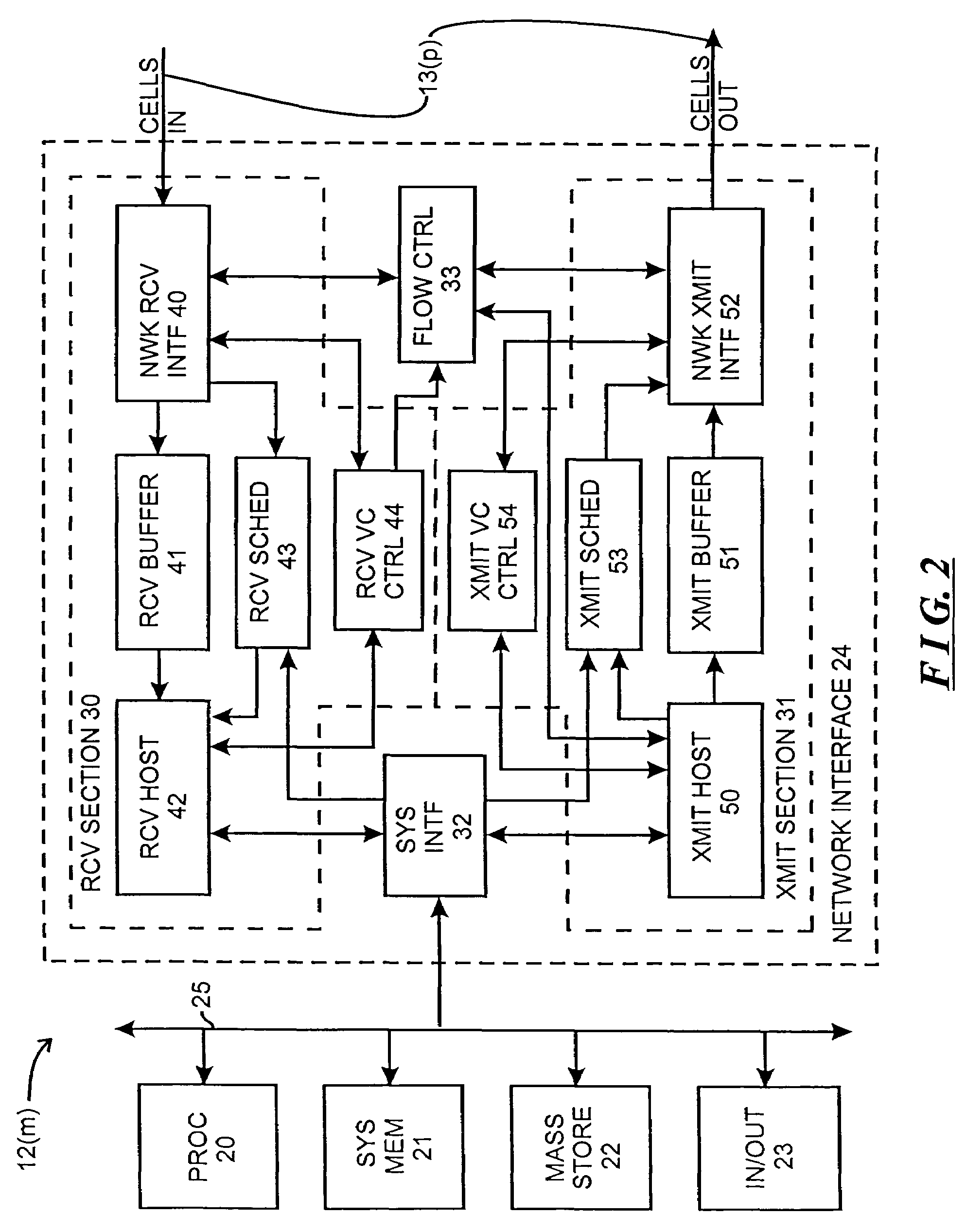System and method for scheduling message transmission and processing in a digital data network
a digital data network and message transmission technology, applied in the field of digital communication systems, can solve the problems of slow information transfer, inability to use other devices connected thereto, complex network, etc., and achieve the effect of fair message transmission, fair message processing, and fair message transmission
- Summary
- Abstract
- Description
- Claims
- Application Information
AI Technical Summary
Benefits of technology
Problems solved by technology
Method used
Image
Examples
Embodiment Construction
[0014]FIG. 1 schematically depicts a computer network 10 including a plurality of switching nodes 11(l) through 11(N) (generally identified by reference numeral 11(n)) for transferring signals representing data among a number of devices, which in FIG. 1 are represented by computers 12(1) through 12(M) (generally identified by reference numeral 12(m)). The computers 12(m), as is conventional, process data, in accordance with their program instructions to generate processed data. In their processing, a computer 12(mS) (subscript “S” referencing “source”) may, as a source computer, need to transfer data, processed data and / or program instructions (all of which will be referred to herein generally as “information”) to another, destination, computer 12(mD) (subscript “D” referencing “destination”), which may need to use the transferred information in its operations. Each computer 12(m) is connected over a communication link, generally identified by reference numeral 13(p), to a switching...
PUM
 Login to View More
Login to View More Abstract
Description
Claims
Application Information
 Login to View More
Login to View More - R&D
- Intellectual Property
- Life Sciences
- Materials
- Tech Scout
- Unparalleled Data Quality
- Higher Quality Content
- 60% Fewer Hallucinations
Browse by: Latest US Patents, China's latest patents, Technical Efficacy Thesaurus, Application Domain, Technology Topic, Popular Technical Reports.
© 2025 PatSnap. All rights reserved.Legal|Privacy policy|Modern Slavery Act Transparency Statement|Sitemap|About US| Contact US: help@patsnap.com



